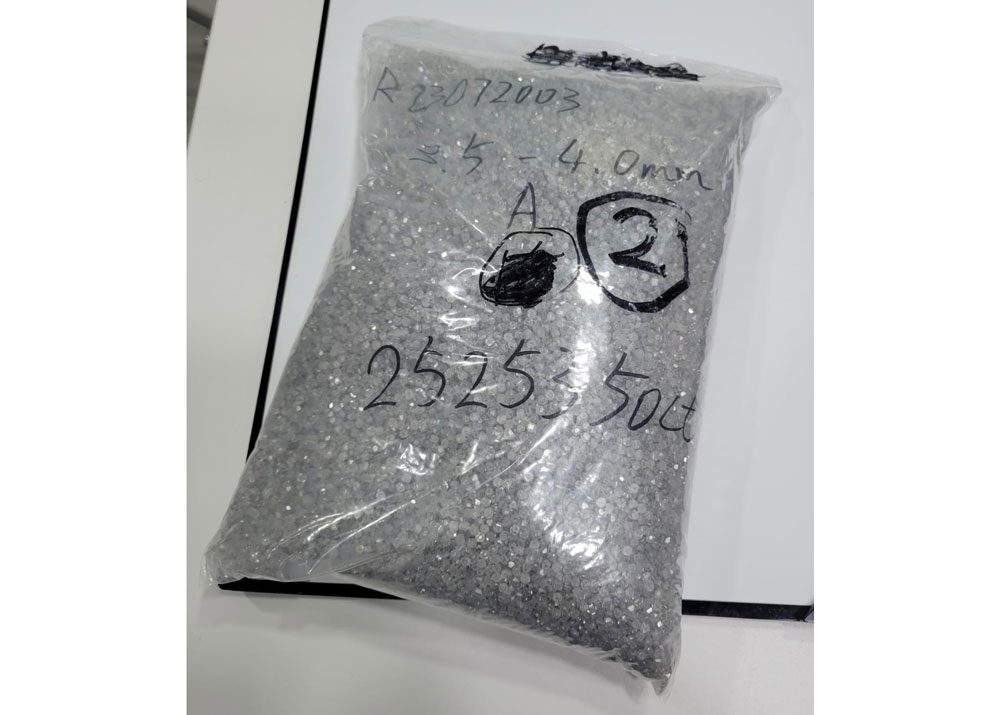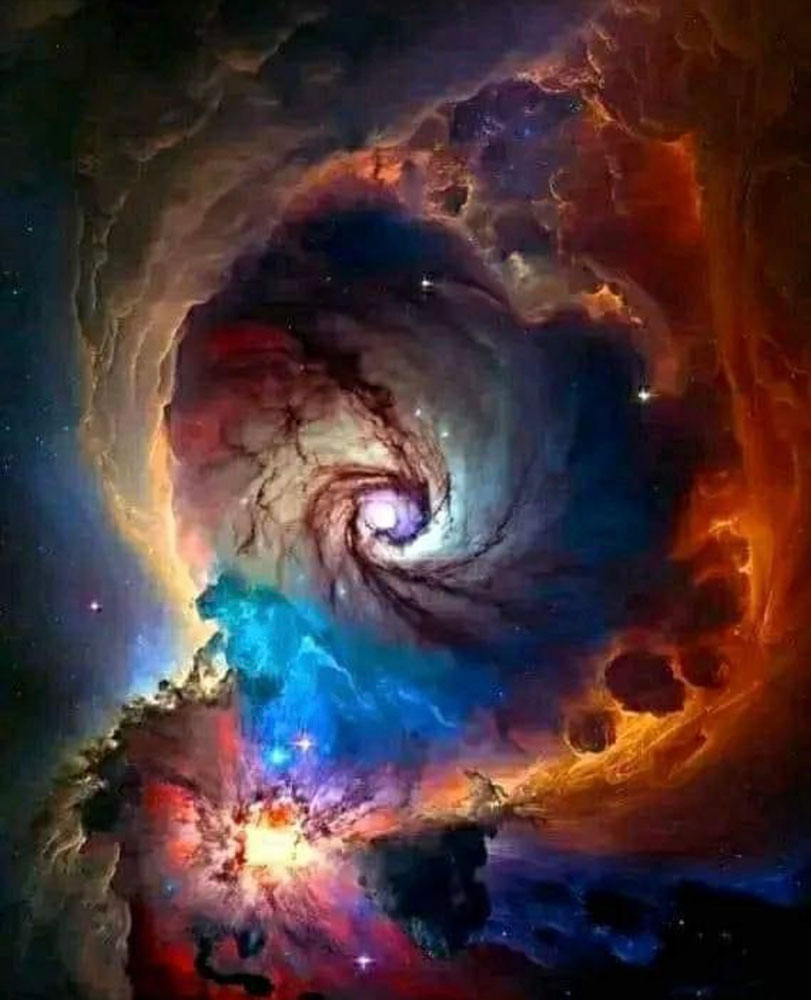In an ever-changing gem marketplace, one of the newest additions to the diamond world is the lab-grown stones. Historically, diamond simulants like Cubic Zirconia (CZ) and moissanite offered customers a chance to wear something white and sparkly without having to buy a natural diamond. In the last few years, a new type of lab-grown diamond has come to market. The lab manufacturers call it a “diamond” because, chemically speaking, it has the hardness of natural diamond and the same chemical makeup. Lab-grown diamonds are made from highly-pressurized carbon, which mimics—but is far from identical—to the same growth process in a natural stone. Lab-grown diamonds take months to grow. Natural diamonds take millions of years and come from deep in the Earth’s mantle. Lab diamonds are grown into rough, which is sent to India (the world’s major diamond cutting center) to be cut and polished, just as natural diamonds are. Lab-grown diamonds have inclusions in them, although natural diamonds have a wider variety of inclusions. So are the lab-grown stones diamonds or not? The marketers insist that there should be no distinction between a mined diamond and a lab-grown in the eyes of the consumer. Yet, the jewelry and gemology world goes to great pains to identify which diamonds are natural (mined) and which are lab-grown because no one wants to inadvertently sell a lab-grown as a natural.
Natural, mined diamonds are much pricier than lab-grown because naturals have been coveted since they first became unearthed, some 2000 years ago. Many factors go into natural diamond pricing in comparison to lab-grown stones. However, natural diamonds have a stronger resale value. A fine, mined diamond is still far rarer than a lab-grown and most people find it more romantic to own a piece of nature. But many people are coming around to lab-grown because one can often get a larger, whiter diamond for the same money or less and bling matters. Lab-grown makers cite the more benign environmental effects of growing their stones, yet the technology to grow a stone uses a lot of energy 24 hours a day, plus microwave heat to replicate the growing environment of natural stones. Environmental effects from a mining operation are huge, even when responsibly done. One advantage for my clients is that the same money buys a much larger lab-grown diamond, so if size is important and the budget is crucial, lab-grown might be a good choice. Feel free to call with questions or if you want to explore this further. Hooray for spring! Diana
Hi, everyone! I hope this finds you off to a good start for 2024, either in the tropics or at home curled up with a good book. I’ve just finished “Covenant of Water” by Abraham Verghese and highly recommend his brilliant writing.
This morning, one of my colleagues posted a photo of a plastic bag filled with 250,000 carats of small diamond “melee,” the tiny gems that add sparkle to your pieces. These itty-bitty things are full cut diamonds, not chips and I laughed when I saw this grayish bag of stones. So plain yet so beautiful when set. It’s all about potential, isn’t it?

The next photo is of sublime star dust, taken through the James Webb telescope. Note the gemmy colors of star dust, tiny particles that have their own light refractivity. I love these photos for so many reasons and I’ll wager you do too.

From the mundane to the sublime, we keep striving.
Love from the studio,
Diana
The passing of Britain’s esteemed Queen again raises the issue of who should own the 105-carat Koh-I-Noor diamond that graces the center of the Queen Mother’s Crown. I am quite sure that the diamond will never be removed from the Imperial Crown and handed back to India, but it started me thinking about the spoils of war and seizing prized objects. Is there a statute of limitations after which objects should remain where they are? Is possession really nine-tenths of the law?
Nearly every major country has helped themselves to historical heritage objects from countries we have explored, invaded, or colonized. In current times, provenance is a key topic in museums as they reevaluate collections of significant cultural objects. For instance, the Metropolitan Museum of Art in New York has a full-time provenance researcher named Christel Force. She tells us that “provenance is the lives of objects and their owners wrapped into one." She talks about the Nazis looting art and continuing efforts to reunite owners with their works.
But back to the Koh-I-Noor. I’ve attached an article here from the Smithsonian about the Crown Jewel because there is more to this than I can write in a newsletter. You will see that the original “ownership” of this gem is murky, and it was nabbed back and forth in power struggles for many years. I don’t want to spoil the ending, so read on.
Back to creating…
Diana
This forest in a pendant features a two-carat, multi-colored sapphire of deep green, blue, and the golden yellow of a late summer afternoon. Crowned by a circle of canary yellow and champagne diamonds and set in 18kt yellow gold, this piece reveals your daring, beauty-loving self. Only one, just like you.
This custom-made piece has been sold, but Diana can make a similar one for you. Prices vary according to availability of gemstones and metals. Example pictured sold for $5,250.
Last week, I sent out a client letter about Alrosa and the current government sanctions against Russian diamonds. Read it here.
Today, I received notice from GIA (Gemological Institute of America) that the body will soon offer GIA Source Verify, a geographical origin notation for natural, mined diamonds that will be included on the GIA diamond reports we all use. GIA will also identify lab-grown diamonds. Several of you have written or called about the diamond situation. You wanted to know whether lab-grown diamonds are a good alternative to buying sanctioned material.
Indeed, lab-grown diamonds represent one way to buy knowing that the gem has not come from Russian mines or underserved mining communities. The other thing to consider is natural, mined diamonds recycled from vintage jewelry. The market for vintage diamonds is continuing strong for lots of good reasons. One, vintage diamonds are recycled, so no new mining, no conflict diamonds, no sanctions… just a beautiful old stone. The older stones are cut very differently than new material, so they glow rather than sparkle, although they do have a lot of life.

I love them. So, if you are in the market, please let me know. We can do some amazing work with the old, mined stones. Stay tuned for my latest project with one. Regards from the studio,
Diana
The bloody, brutal war in Ukraine caused the US government and its allies to ban the import of Russian diamonds. The jewelry industry fully supports this measure, but the sanction levied by the United States is porous because most Russian diamond material is sent to India for cutting and India is very friendly with the Russians.
Once diamonds are cut and released into the market, it becomes rather impossible to know their geographical origin. One large trading platform is suggesting the following:. “Buyers wishing to avoid polished diamonds sourced from Russian rough are encouraged to request the following statement on all invoices: “The polished diamonds herein invoiced are cut from rough mined in [country].” Alternatively, for polished of unknown rough sources: “To the best of our knowledge, the polished diamonds herein invoiced do not originate from Russian rough diamonds exported after April 1, 2022.”
That puts the responsibility back onto the dealer at the time of transaction but it’s a weak solution requiring trust and transparency all the way back down the chain. It’s a real problem. I’m going to try and source Canadian diamonds until the industry gets a better handle on this.
I attended a seminar about this last week. According to a report written by Hans Merket for the International Peace Information Service, “Alrosa is the largest diamond producing company in the world by volume. In 2021 it sold 45.5 million carats of diamonds worth USD 4.2 billion. Alrosa accounts for over 90% of Russia’s diamond production. Russia is the world’s largest diamond producing country, accounting for approximately one third of global supply. Alrosa’s main mining operations are located in the Republic of Sakha (Yakutia) and the Arkhangelsk region in the northwestern part of Russia. In addition, Alrosa has important activities in Africa, especially in Angola, the world’s fourth largest producer…”
Alrosa has three major shareholders, two of which are the Russian government. The third share is thought to be owned by a mix of oligarchs and close associates of Vladimir Putin. Money from diamond sales finances military equipment and operations among other things so it’s easy to see why Alrosa should be punished. There is a suspicion that Alrosa’s mining extends to uranium for nuclear warheads.
The implications for the jewelry industry are complex because we are a tight, international weave with buying and trading platforms in far-flung places, including Belgium, Israel, the UAE, India and China. Historically, Belgium is a major diamond hub and India is using the opportunity to muscle into first place by assuring Russia of continued business dealings.
There is much more to this story which I’d be happy to discuss further with any of you on this list of beloved clients. We have shared many joyous occasions together through the jewelry you buy from me. You’ve trusted me to source gemstones from responsible mining communities and I have.
Now, 23 years later into my career, the stakes for geographical origin are higher than ever. The way forward is still opaque but the industry is working towards new accountability measures.
Sending best wishes for health and peace in your own homes.
Diana



